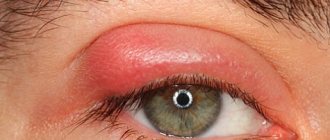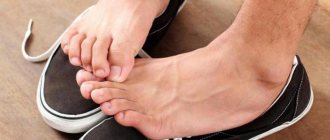Hands are often exposed to aggressive external influences, and even gloves may not be protection, but one of the factors causing itching, peeling and redness. Therefore, dry skin, rashes and tingling are discomforts that many people experience. But the hands itch and itch not only because of irritation. Such symptoms can be caused by factors of a different nature, so such discomfort cannot be ignored.
Etiology of the phenomenon
Itching usually occurs as a result of some pathological condition of the body, that is, it is, in fact, a symptom.
It happens, of course, that your hands and feet itch from exposure to the ambient temperature on the skin, in severe frost or, conversely, in the summer heat. But in most cases, itching, burning and the presence of red spots on the skin are a manifestation of the following diseases:
- An allergic reaction occurs due to contact with the skin on the hands of an allergic pathogen. In other words, the human immune system reacts to a substance included in the composition, for example, dishwashing detergent, washing powder, soap and other chemical compounds used in everyday life. An allergen can also be paint or plant sap, anything a person touches or inhales. In this case, the allergen can be determined empirically by paying attention to which substances came into contact with the person before the onset of symptoms.
- A complication of an allergic reaction is eczema. This unpleasant condition is not transmitted by touching or in any other way, but causes severe discomfort to a person with constant burning and itching of the skin on the palms and wrists.
- If the spots that appear on the hands itch especially intensely at night and are localized mainly on the back of the hand, then this is most likely scabies. The causative agent of the pathology is the scabies mite, a small parasite that settles in the upper layer of the epidermis and in the folds of the skin. This type of disease is transmitted through tactile contact and requires long-term professional treatment.
- Disruption of the nervous system. In this case, the hands itch during moments of severe nervous tension, as a result of lack of sleep or a sharp jump in blood pressure. Usually, in this state, a person exhibits other signs of disruption of the autonomic and nervous systems - stool disturbances, tachycardia occurs, and loss of appetite.
Why do your palms itch?
Researchers identify five common causes for Itchy Palms.
Dry and irritated skin
This is especially true during the winter season, when indoor humidity drops. The skin rapidly loses moisture, and the thin epidermis on the palms suffers first of all. This is how irritation, peeling and itching appear.
Dry skin also occurs for other reasons - for example, due to decreased activity of the thyroid gland (hypothyroidism).
Or maybe you just used the wrong soap or washing powder? Or did you rub your palms too thoroughly while washing your hands? The thin film of sebum on the surface of the epidermis could be destroyed, causing irritation and itching.
Allergic reaction
The allergy could be caused by an object or plant you touched. Or, for example, a hand lotion containing an irritant substance to which your skin reacted. Another option: the reaction was caused by the use of some product or medicine.
An important nuance: allergic itching does not always begin immediately. Sometimes several hours pass between exposure to a stimulus and the realization “oh, my palms are itching.”
Atopic dermatitis
Aka eczema. By the way, this is a fairly common condition: in the United States, about 10% of people suffer from atopic dermatitis affecting the hands.
This non-contagious disease can cause redness, colored (pink, grayish, brownish) spots, blisters and itching on the palms.
Most often, eczema affects people Itchy palms: 6 causes, treatment, and prevention, whose hands are regularly exposed to moisture and harsh chemicals:
- hairdressers;
- cleaners;
- catering industry employees;
- mechanics;
- workers in medical laboratories and hospitals.
Eczema can disappear for several months, then worsen again, sometimes for no apparent reason.
Hyperglycemia or diabetes
Elevated blood sugar levels can also make itself felt by itchy palms.
Nerve damage
Diabetes can damage the nerve fibers in the palms. Or, popular among those who spend a lot of time at the computer with a mouse in their hands, a disease called carpal tunnel syndrome (also known as carpal tunnel syndrome).
Such disorders often cause a feeling of discomfort, numbness in the hands and at the same time itching in the palms.
What else could be the reason
When your hands itch, photographs cannot convey the complexity of the situation, because they do not show how the person is suffering. In addition to the above, the following conditions may cause itching:
- If your hands itch from the hand to the elbow, and peeling of the skin appears, then this is most likely psoriasis, a disease caused by abnormally dividing epidermal cells. The causes of the pathology are still unknown. Treatment is long-term – it lasts throughout a person’s life. It is symptomatic in nature, that is, therapy is aimed at relieving itching on the skin and temporarily stopping skin exfoliation. Since the cause remains unknown, an effective treatment that can eliminate the problem forever has not yet been found.
- Mycosis of the hands. In this case, the hands itch due to the spread of a fungal infection. It usually starts with nail fungus and progresses to the skin on the fingers, palms and wrists.
- Sometimes the hands itch due to the release of large amounts of bile acid into the blood. This occurs due to liver dysfunction resulting from cirrhosis or hepatitis. Usually the problem is not limited to the skin on the extremities. Itching and burning appears throughout the patient's body.
- In diabetes mellitus, redness and itching affects not only the wrists, but also the skin on the elbows. This suggests that the chosen medicine to normalize blood glucose is not entirely suitable for the patient. It is necessary to select another remedy or change the dosage of the old drug.
Associated symptoms
In diseases of the internal organs at the initial stage, itching may be the only symptom that causes inconvenience. In case of skin irritation and pathologies of a dermatological nature, other signs are usually also disturbing:
- with eczema, small blisters appear, the skin cracks, forming weeping wounds,
- psoriasis is characterized by joint damage,
- with scabies, a high temperature rises, ulcers form on skin lesions,
- allergic dermatitis is accompanied by the appearance of red spots, burning,
- with diabetes mellitus, the delicate skin between the fingers and on the wrists cracks, a frequent urge to urinate is noticeable,
- The fungus causes stains and a putrid odor.
Read also: Itchy head and hair loss: treatment for itchy skin, what to do
When the skin of the hands is affected, an integral complication is a depressed psychological state, which only worsens the problem and impedes treatment.
Diseases that cause redness of the hands
There are a number of diseases in which redness of the wrists and palms is one of the symptoms. But this symptom usually appears in combination with other characteristic symptoms that make it possible to diagnose the disease. This may be gout, dysfunction of the thyroid gland or pituitary gland, leukemia, lymphogranulomatosis and other systemic diseases.
Diagnostic measures
When your hands itch, a dermatologist can help identify the cause. First of all, he conducts an external inspection of the affected areas. Then the patient is sent for a series of tests to help determine the type of pathology. This is a laboratory test of blood and skin scrapings.
An important aspect is the collection of anamnesis, during which the doctor finds out where the patient’s hands have been recently, what he eats and how he feels in general. Self-diagnosis, especially prescribing treatment, can lead to a worsening of the situation.
Differential diagnosis
Identifying the exact disease is complicated by the similarity of symptoms of different pathologies. Plaques can occur with psoriasis and HIV infection, a small rash can be a symptom of ordinary irritation or serious problems of internal organs. Therefore, diagnostics takes place in several stages using different research methods.
- Visual examination and conversation with the patient. The doctor learns about activities, trips, environment recently before treatment.
- Laboratory tests of blood and urine. Tests make it possible to determine the type of diabetes mellitus.
- Histology of psoriasis. The doctor has the ability to determine the stage of the disease.
- Scraping for microscopic examination of scabies.
- Blood chemistry.
If necessary, the dermatologist prescribes consultations with colleagues. It is possible to conduct ultrasound, MRI, and other instrumental studies.
First aid
If the reason why your hands itch is obvious, then you can try to cope with the itching and burning on your own, before the patient sees a doctor. After a nettle burn, you need to rinse the skin first with hot water, then with cold water - this narrows the pores on the skin and relieves the burning sensation. Fat cream or regular butter is used for the same purpose. It prevents the caustic juice from being absorbed into the skin.
When itching appears immediately after contact with a detergent, first of all, you need to stop using it and give the patient Diazolin or another anti-allergy drug. If your hands itch in the cold, you need to lubricate them with cream. A cosmetologist will help you choose such a product.
Traditional medicine recipes
Home remedies and procedures based on them can help reduce itching or completely get rid of it.
- Baths of string, chamomile, mint. 2 tablespoons of dry collection should be poured into 1 liter of warm water, boiled for 5 minutes and allowed to cool. Herbs can be prepared in a mix or in mono form. The procedures are carried out twice a day for 15 minutes.
- Aloe compress. The washed leaves should be crushed, evenly distributed in a cotton napkin and wrapped around your hands, after 30 minutes, rinse off the remains with warm water.
- Honey mask. The natural liquid product is applied with a thin film to the skin and washed off after 10 minutes. It is important that a person is not allergic to honey.
You cannot prescribe a course on your own using either folk remedies or medications. The side effect may be much more dangerous than the symptoms you want to get rid of. Only a doctor should decide how to cure itching on the wrists and monitor the healing process.
Drug treatment
Drug treatment for itching, burning and redness on the skin of the wrists and palms depends on the cause of their occurrence, that is, it is aimed not only at relieving symptoms, but also at eliminating the pathology itself, if possible. In the case of diabetes and psoriasis, this is precisely impossible, since the diseases are considered incurable. In other cases, treatment is prescribed individually in each individual case. Self-medication, especially of systemic diseases, is extremely dangerous and ineffective.
To relieve symptoms, Fenistil, Sinaflan, Lorinden or Fluorocort are most often used. The procedure for using these products is indicated by the attending physician or is described in the attached instructions for use.
For internal use, preparations with calcium and iodine are prescribed. This strengthens the human endocrine system. In order to improve the immune defense of a person and his skin, the patient is prescribed a course of taking vitamins A, D and E.
General recommendations
In general, to restore elasticity, normal skin moisture, eliminate itching and burning, there are a number of general recommendations that must be followed along with conservative treatment:
- It is necessary to reduce the likelihood of allergies by excluding exotic fruits and nuts from the diet.
- During treatment you should not drink alcoholic beverages.
- Hands should be washed several times a day, especially if a person is employed in hazardous work or has constant contact with chemicals.
- During the treatment period, you need to wear clothes made from natural fabrics - cotton, linen, silk or wool. Although the latter can also cause redness on the skin due to its fleecy texture.
- During the treatment of skin diseases, it is advisable to quarantine the patient in order to reduce the likelihood of transmitting the infection to other people through tactile contact or through shared objects.
- During treatment, you need to change your regular cosmetic cream to products containing vitamins and natural elements.
Treatment with folk remedies
As humans evolved, we constantly encountered skin diseases, including those on the arms and hands. As a result, various treatments using medicinal plants have been developed. But before starting such therapy, you should consult with your doctor to protect yourself from possible allergic reactions and side effects.
- Nettle can cause not only burns, it has a powerful healing effect. To use the plant for therapeutic purposes, you need to brew dry nettle leaf instead of tea in a ratio of 1 tbsp. spoon for 200 g of water. But you need to take this remedy for no more than 2 weeks in a row. It should be alternated with regular tea or other decoction.
- Tincture of dill seeds strengthens the skin well. It’s easy to prepare – 2 tbsp. spoons of grains need 250 g of boiling water. Leave for at least 2 hours, consume after straining 30 minutes before meals.
- Pain, itching and burning are relieved with mint infusion. There is no need to drink it; you can soak your hands in it or make a compress with the product. An infusion is prepared in a ratio of 2 tbsp. spoons of dry leaf per 500 g of boiling water, leave for at least 1 hour.
- Burdock decoction. The crushed root of the plant is used to prepare it. It is brewed in a ratio of 1 tbsp. spoon for 500 g of boiling water. The product is infused for 15-20 minutes. You need to take the product after straining, 30 minutes before meals, 2 times a day.
How to relieve itchy palms at home
Until you get to the doctor, you can try to reduce the discomfort on your own.
Apply cold compresses
For example, apply gauze pads soaked in cool water to your palms for 5–10 minutes. Or hold on to a bag of frozen vegetables wrapped in thin cloth.
Stay hydrated
Try to drink at least 2.5 liters of fluid per day. We remind you: tea, juices, liquid soups, juicy fruits also count.
Monitor indoor humidity
Optimal humidity level Indirect health effects of relative humidity in indoor environments. - 40–60%.
Moisturize your hands regularly
Moisturizing creams and lotions will help with this. Naturally, those to which you are not allergic. If in doubt, ask your physician or dermatologist to help you choose a hypoallergenic product.
Preventive actions
To prevent skin diseases on your hands, you must follow a number of recommendations:
- When working with household or industrial chemicals, it is necessary to use personal protective equipment: gloves, respirator, etc.
- To strengthen the immune system and improve the functioning of internal organs, it is necessary to give up alcohol and smoking.
- You need to include foods rich in vitamins and minerals in your diet.
- In bad weather or on a sunny day, it is necessary to protect the skin with an appropriate cosmetic cream.
- You cannot use other people's towels and hygiene products.
- Hands should be washed several times a day, not just before eating. You can do it without soap, just rinse them in running water.











